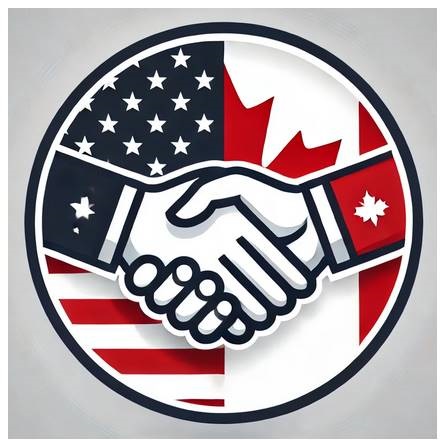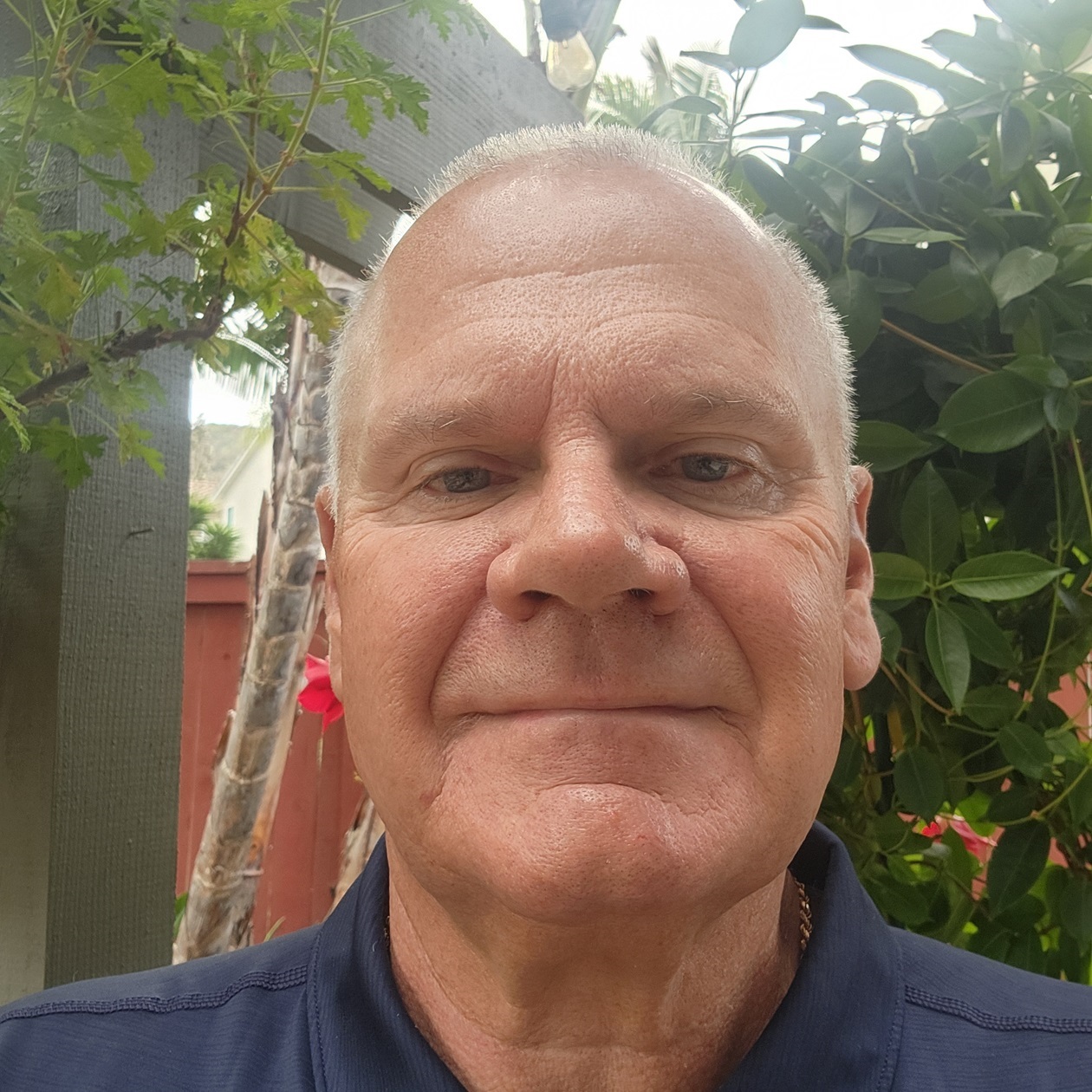|
Preparing for the Impact of Fusion for Energy |
DIRECTORY | ||
|
Contributions: |
Action: Help sustain KEI's contributions |
Event: Sovereignty At Risk? Dinner & Discussion February 28th, Calgary EARLY BIRD $50 HERE |
|
|
Editor - Perry Kinkaide |
The lead article is a thorough and timely expose of crime in Canada, a sore point of many including our neighbour to the south. Last week, I sympathized with leaders struggling to find direction amid rapid change. This week in the concluding article I explore the leadership qualities needed for breaking down institutional tyranny, shaping AI, and embracing change for seizing the future. If in Calgary or nearby, do consider registering for our next SOVEREIGNTY Dinner & Discussion February 28th: deadline of the tariff ceasefire. - Editor |
||
|
Crime in Canada Exposed - Organized crime, drug trafficking, and financial corruption
U.S. President Donald Trump has exposed Canada's hidden crisis of organized crime, challenging the nation's carefully cultivated image of safety and stability. His public statements included reference to an extensive problem in Canada with organized crime, drug and human trafficking, and money laundering issues that Canadian authorities had long downplayed and generally unfamiliar to the public.
Trump's intervention cited that organized crime groups launder between $45 billion and $113 billion annually through Canadian real estate, cryptocurrency, and trade-based schemes, undermining the economy and inflating property markets. His administration highlighted how Mexican cartels, Chinese triads, and Eastern European gangs exploit Canada's permissive financial systems and relatively open borders. The fentanyl crisis exemplifies this problem, with chemicals smuggled from China through Canadian ports, airports, mail systems and such being processed and distributed both domestically and into the U.S. Nobody has any idea of the amount and value of drugs imported or exported from Canada.
https://us02web.zoom.us/j/84258596166?pw..
Continued from above. Under Trump's scrutiny, Canada's inadequate law enforcement response became clear. Lenient sentencing, complex legal processes, poor interagency coordination, inadequate resources, aging technology and government corruption have allowed criminal organizations to operate with relative impunity. Only after Trump's administration applied pressure did Canada begin to take significant steps, including appointing a Fentanyl Czar and deploying 10,000 additional border officers. The effectiveness of a “Czar” with few direct reports and 10,000 border officers, assuming Canada can even muster 10,000 border guards with required equipment and technology in a reasonable period of time, is debatable at best to hopeless at worst.
Despite these reforms prompted by Trump's intervention, Canada lags far behind organized crime networks in sophistication and adaptability. The path forward requires sustained investment in intelligence-sharing, stricter sentencing, expedited trials, and enhanced asset forfeiture laws to just name a few. While Trump's pressure has forced Canada to acknowledge these long-ignored problems, meaningful progress depends on Canada's willingness to implement serious reforms and modernize its approach to combating organized crime. Canada, long considered a land of safety and stability, is confronting a significant surge in organized criminal activities. Networks involved in drug trafficking, money laundering, human trafficking, auto theft, and fraud have become increasingly sophisticated, overwhelming law enforcement agencies. Factors such as weak financial regulations, lenient judicial systems, and limited resources have exacerbated the situation. U.S. President Trump brought international attention to these issues, criticizing Canada for its role in transnational crime and emphasizing its impact on both Canadian and U.S. security.
Drug Trafficking: A Growing Cross-Border Crisis Drug trafficking remains a critical component of organized crime in Canada, with networks smuggling, producing, and distributing a variety of illegal substances and is estimated to generate 87% of organized crime revenue. The issue has become increasingly concerning due to the rise of fentanyl, which has contributed to a severe opioid crisis in both Canada and the United States.
The Fentanyl Crisis: Origins and Impact. Fentanyl, a synthetic opioid that is 50 to 100 times more potent than morphine, has fueled a public health emergency in both Canada and the U.S. The drug is responsible for thousands of overdose deaths each year. In Canada alone, opioid-related deaths exceeded 30,000 between 2016 and 2022 (Canadian Public Health Agency, 2023).
Fentanyl consumption in Canada has escalated significantly, contributing to a severe opioid crisis. Between 2016 and 2022, the country experienced over 49,105 opioid-related deaths, with more than 75% involving fentanyl or its analogues. In the first quarter of 2023 alone, there were 1,904 opioid-related fatalities. canada.ca
Wastewater analysis from January 2022 to November 2023 in seven Canadian cities, including Metro Vancouver, Edmonton, and Toronto, revealed varying levels of fentanyl consumption. This data provides insights into regional usage patterns, aiding in targeted public health interventions. www150.statcan.gc.ca
The pervasive presence of fentanyl in the illicit drug market underscores the critical need for comprehensive strategies to address this public health emergency.
Who Makes and Distributes Fentanyl? Fentanyl is largely manufactured in China and trafficked to Canada through direct shipping routes or via intermediary countries such as Mexico. Chinese manufacturers often supply precursor chemicals used to produce fentanyl, which are smuggled into Canada or Mexico for final production. In Canada: Major distribution hubs include Vancouver, Toronto, and Montreal. From these cities, fentanyl is disseminated to smaller towns and rural areas, exacerbating the opioid epidemic nationwide. In the U.S.: Canadian-based traffickers and Mexican cartels collaborate to smuggle fentanyl across the border. The U.S. receives large shipments of the drug primarily through ports of entry and illicit border crossings.
The Magnitude of Drug Trafficking: Domestic and Cross-Border Impact. Nobody knows the real number, and estimating the precise size of the illicit drug market is challenging, but available data highlights the immense scale of this trade within Canada and across the U.S. border. In Canada, drug trafficking generates about 87% of the cash flow related to organized crime activities (OJP.gov). The Canadian Alcohol and Drugs Survey (CADS) revealed significant domestic consumption of other drugs:
On the cross-border side, Canada is a key conduit for drugs smuggled into the U.S. For example, large quantities of fentanyl, cocaine, and methamphetamine flow from Canada into the U.S., with notable seizures demonstrating the scale of the issue. A 2024 bust in Illinois saw 1,100 pounds of cocaine worth $40 million smuggled from Canada (NYPost.com).
Other Drugs: Production and Import - Export. In addition to fentanyl, organized crime groups are involved in the trafficking of various drugs, including:
How Drugs Are Imported into Canada
How Drugs Are Smuggled from Canada to the U.S.
Organized Crime Groups Involved in Drug Trafficking. The RCMP estimate that there are approximately 4000 organized crime syndicates operating in Canada, a horrifying reality:
The Challenges of Combating Drug Trafficking. The “war on drugs” has long been lost, and perhaps was never winnable. The complexity of international drug trafficking makes it difficult for Canadian law enforcement to contain. Indigenous reserves and their geographic positioning further complicate law enforcement efforts, as the jurisdictional issues and limited monitoring in these areas provide ample opportunities for criminal organizations to operate undetected. Weak oversight at ports, vast and remote border regions, and limited interagency coordination create vulnerabilities that organized crime groups exploit. Additionally, lenient government policies and judicial sentences further undermine enforcement efforts, as traffickers perceive the legal risks as low compared to the immense profits generated by the trade.
Drugs Trafficked from Canada to the United States. While comprehensive data on the volume of drugs trafficked from Canada to the U.S. is limited, certain trends have been identified:
Overall, while precise figures are elusive, the available data underscores the significant role Canada plays in both domestic consumption and as a conduit for illicit drugs entering the United States. This is President Trump’s point, and what needs to be mitigated Money Laundering: The Lifeline of Organized Crime – Show Me the MoneyMoney laundering is central to Canada's organized crime problem. Estimates suggest that between $45 billion and $113 billion is laundered annually through sectors like real estate, casinos, banks, cryptocurrency, and trade-based schemes (Global Financial Integrity, 2020; RCMP Financial Crime Reports, 2021). These illicit funds enable criminal networks to expand while concealing the origins of their profits.
The Strong Link Between Drug Trafficking and Money Laundering in Canada. Drug trafficking and money laundering are deeply interconnected in Canada, forming a symbiotic relationship that fuels organized crime and undermines the nation’s financial and public security. Canada’s role as a major producer, consumer, and transit point for illegal drugs such as fentanyl, methamphetamine, and cocaine has made it a prime location for laundering the proceeds of these crimes. Criminal networks, including Mexican cartels, Asian triads, and domestic gangs like the Hells Angels, rely on sophisticated money laundering operations to legitimize profits and reinvest them into expanding their drug distribution networks.
Drug Trafficking: The Source of Illicit Funds. Canada is a significant player in the global drug trade. Fentanyl production, in particular, has surged due to the ease of smuggling precursor chemicals from China, which are processed in domestic labs and distributed both locally and internationally. Methamphetamine and cocaine trafficking also remain key elements of the drug trade, with Canadian ports such as Vancouver serving as critical entry and exit points for international smuggling. Domestically, Canada’s growing drug market generates billions in illegal cash annually, most of which requires laundering to avoid detection by authorities.
Real Estate: A Preferred Vehicle for Laundering Money (Est. $5 Billion Annually). Real estate has become one of the most commonly exploited sectors for money laundering in Canada, particularly in major cities like Vancouver and Toronto (German Report, 2019). Criminal networks employ several methods to clean illicit funds through property transactions:
The "Vancouver Model," in which criminals launder money through casinos and real estate concurrently, has been one of the most prominent schemes in Canada (German Report, 2019). This practice has inflated housing prices and contributed to affordability crises in regions like British Columbia. Canadian Casinos are a Sure Bet. Casinos in Canada have been a key target for money laundering, particularly in British Columbia, where the “Vancouver Model” gained notoriety. This scheme typically involves criminals using large amounts of illicit cash—often proceeds from drug trafficking or other illegal activities—to buy casino chips. These chips are then minimally gambled before being redeemed for a casino-issued cheque, which appears as legitimate gambling winnings. Since Canadian casinos often rely on self-reported income declarations rather than verifying the true origin of funds, criminals can launder substantial sums without raising immediate red flags. Another common method involves layering transactions through multiple casinos. Criminals may deposit cash into player accounts and transfer funds between different gaming establishments, creating a paper trail that obscures the original source of the money. In British Columbia, organized crime networks frequently use casinos in conjunction with real estate laundering schemes, making it difficult for authorities to trace the flow of illicit funds. High-limit betting rooms, international high-roller gamblers, and lax reporting mechanisms further contribute to the problem. Recent inquiries, such as the Cullen Commission, revealed that millions of dollars were funneled through casino floors with limited oversight, exposing vulnerabilities in Canada’s anti-money laundering system. Cryptocurrency: A New Avenue for Laundering Money (Est. $5 Billion to $15 Billion Globally Impacting Canada). With the rise of digital currencies, cryptocurrency has become a key tool for money laundering globally, and Canada is no exception. Criminal networks exploit the anonymity and decentralized nature of cryptocurrency transactions to move funds without detection (Chainalysis Report, 2022). Key methods include:
The Canadian government has recognized the threat of cryptocurrency-based money laundering and has introduced regulations requiring cryptocurrency exchanges to register with the Financial Transactions and Reports Analysis Centre of Canada (FINTRAC, 2021). However, enforcement has lagged, and many platforms remain unregulated. The Role of Federal Policies in Aiding Organized Crime and Money Laundering. Federal government policies have inadvertently contributed to the growth of organized crime and money laundering in Canada. One key issue is the lack of stringent anti-money laundering regulations and enforcement. The slow implementation of a beneficial ownership registry—intended to identify the true owners of corporations—has allowed criminals to exploit anonymous shell companies (Transparency International Canada, 2020). Canada’s now-defunct Quebec Immigrant Investor Program also played a role, as it allowed wealthy foreign nationals to secure Canadian residency by making large investments. This program was criticized for its weak financial vetting processes, enabling individuals with questionable backgrounds to launder money through real estate and other investments. Although the program has been shut down, its legacy continues to impact the nation’s financial crime landscape. In addition, lax oversight in sectors such as real estate and casinos has been attributed to inadequate federal regulation and enforcement. The federal Financial Transactions and Reports Analysis Centre of Canada (FINTRAC), which monitors financial transactions for suspicious activity, has been criticized for being underfunded and ineffective (FINTRAC Annual Reports, 2019-2021). A 2019 report revealed that despite identifying billions of dollars in suspicious transactions, FINTRAC had issued only a handful of fines. Trade-based money laundering (TBML) also highlights federal policy gaps. Canada’s expansive trade network, combined with minimal regulatory oversight of imports and exports, allows criminals to use fraudulent invoices to move illicit funds across borders (Global Financial Integrity, 2020). Police Agencies Are Overwhelmed and Have So Far Lost the BattleCanadian law enforcement faces a significant uphill battle against organized crime due to corruption, limited resources, and the sophisticated adaptability of criminal networks. Corruption within financial oversight bodies, local governments, and law enforcement agencies has allowed criminal organizations to obstruct investigations. High-profile cases, such as money laundering in British Columbia’s casinos, reveal how regulatory failures enable criminal enterprises. Foreign-backed influence campaigns have further emboldened transnational crime networks, making it difficult for police to stay ahead. Despite modernization efforts, Canadian police agencies remain outmatched by organized crime’s use of advanced technology, global connections, and evolving tactics. Criminal networks adapt faster than law enforcement can respond, and bureaucratic delays, along with limited manpower, exacerbate the issue. In 2022/2023, Canada allocated $19.7 billion to police services, with 71,472 officers nationwide, but the police to population ratio has dropped to 178 officers per 100,000 people—the lowest since 1970 (StatCan, 2023). The RCMP, operating on a $6 billion budget, faces challenges posed by cybercrime, drug trafficking, and cross-border networks. Organized crime thrives in part due to Canada’s lenient judicial system, where offenders convicted of laundering millions of dollars often receive minimal sentences or probation. Drug traffickers, too, face weak penalties compared to their profits, and lengthy trials enable them to continue illicit activities. Defense attorneys frequently exploit legal loopholes to delay cases involving financial crimes or cyber-related offenses, creating further delays for overwhelmed prosecutors. Cross-border smuggling of drugs, including fentanyl, methamphetamine, and cocaine, including compounds these problems. High-profile incidents, such as the 2024 seizure of $40 million worth of cocaine in Illinois, underscore the vast scale of trafficking operations originating in Canada. Measures Taken to Address the Crisis. One major step forward in the fight against organized crime has been Canada’s recent decision to designate cartels, such as the Mexican drug cartels, as terrorist organizations, following pressure from the U.S. This designation grants police and intelligence agencies broader powers to investigate, intercept communications, and freeze assets linked to these organizations. It allows authorities to treat cartel-related activities as national security threats, which could lead to faster arrests and stronger sentences. With these expanded powers, Canadian police agencies can disrupt trafficking networks more efficiently and pursue cross-border criminals with enhanced cooperation from international partners. Recognizing the severity of the situation, Canada made significant commitments to the U.S. during negotiations with President Trump, focusing on enhancing enforcement and intelligence-sharing measures. Fentanyl Czar and 10,000 Border Agents: A Band-Aid on a Broken System. In response to Trump’s pressure, Canada committed to appointing a Fentanyl Czar and deploying 10,000 additional border officers to combat drug and human trafficking. These measures—without accompanying systemic changes—appear comically insufficient in the face of the broader challenges. The appointment of a Czar with limited authority and the incredible difficulty recruiting and training border 10,000 officers with new technology and equipment, even if possible, effectively underscores how surface-level solutions fail to address the core issues. The formation of a joint US Canada task force aims to tackle cross-border crime, focusing on dismantling organized criminal networks involved in drug trafficking and human trafficking is obviously a step in the right direction, though lets see what Canada can actually contribute here. Without political will, regulatory reform, and technological development, these measures risk becoming symbolic gestures rather than meaningful improvements. Border agents cannot succeed without advanced surveillance tools, real-time intelligence-sharing, and stronger laws governing smuggling, human trafficking and financial crime. Similarly, the Czar’s impact will be limited without significant resources, interagency coordination, expanded asset forfeiture powers, and a commitment to enforcing stricter penalties. Technological Investments and Inter-Agency Collaboration. To manage the influx of data and improve investigative efficiency, Canadian law enforcement agencies have invested in advanced technologies and collaborative frameworks.
Addressing Weak Sentencing and Legal Bottlenecks. Law enforcement leaders have called for reforms in Canada’s judicial system to address lenient sentencing and complex legal proceedings that hinder progress. Proposals include:
Public Engagement and Intelligence Sharing. The role of the public in combating crime has grown with the rise of online reporting systems and public tip lines. Automated systems now filter and prioritize credible submissions, allowing police to focus on actionable leads while minimizing false reports. Moreover, cross-border intelligence-sharing networks, such as the Regional Information Sharing Systems (RISS), have enhanced collaboration between Canadian and U.S. agencies in tracking organized crime. Next Steps for Law Enforcement in Canada. Despite the challenges, Canadian law enforcement is not standing still. President Trump’s pressure on Canada to address its role in transnational crime forced significant policy changes and resource investments. Through advanced technology, stricter border enforcement, and cross-border cooperation, Canada is now attempting to close the gaps that have long been exploited by organized crime. The path to success requires sustained commitment to judicial reform, technological advancements, and continued collaboration with international partners. Without these efforts, criminal networks will remain several steps ahead, threatening the safety and security of both Canada and the U.S. Where from Here? President Trump's intervention has forced Canada to confront its significant role in transnational organized crime, challenging the nation's carefully maintained image of safety and stability. His administration's pressure exposed the true scale of Canada's crisis: organized crime groups laundering up to $113 billion annually and widespread drug trafficking networks exploiting border vulnerabilities. The appointment of a Fentanyl Czar and the promise of 10,000 additional border officers represent initial steps, but their potential impact is highly dubious at best. These measures alone are meaningless unless Canada addresses the deep-rooted systemic issues. Canada's criminal justice system continues to struggle with lenient sentencing, complex legal processes, and limited resources. Law enforcement agencies remain overwhelmed and technologically outpaced by sophisticated criminal networks that exploit everything from cryptocurrency to Indigenous reserves for their operations. The path forward requires more than surface-level reforms. Canada must implement comprehensive changes including:
While Trump's pressure has forced Canada to acknowledge these long-ignored problems, meaningful progress depends on sustained commitment to reform. The stakes are high: without decisive action, Canada risks remaining a haven for criminal enterprises that threaten both Canadian and U.S. security. The true measure of success will be Canada's ability to transform these initial commitments into lasting systemic change that effectively dismantles the sophisticated criminal networks currently operating with relative impunity across its borders. Leadership in an Age of Institutional Tyranny, AI, and Rapid Change The Era of Technocratic Domination
Modern societies are witnessing an unprecedented consolidation of power among bureaucratic and technocratic elites. These individuals, often unelected and insulated from market-driven competition, shape policies that affect millions, if not billions, with little regard for individual initiative or disruptive innovation. Public institutions—once designed to serve society—have increasingly become self-perpetuating entities, resistant to change and more concerned with expanding their own influence than fostering dynamic progress.
This shift has created a paradox: while societies tout democratic values and individual freedoms, the growing influence of regulatory agencies, academic elites, and corporate technocrats has made it increasingly difficult for personal initiative to thrive. Entrepreneurs and dissenting voices struggle against an ever-growing web of red tape, and innovation often finds itself at odds with the institutions that claim to advance it.
History shows that centralization of power in the hands of a few—whether monarchs, bureaucrats, or ideological movements—inevitably leads to stagnation, resistance to reform, and, in some cases, tyranny. The question is: how do societies reclaim a balance where institutions support rather than stifle progress? (See the following insert as an example of a well-known obstacle to Canada's economic vitality; Canada's interests have remained ignored.)
Artificial Intelligence: The Double-Edged Sword. Artificial intelligence is both the greatest opportunity and gravest threat of our time. AI has the potential to radically personalize services, education, and commerce—tailoring information and decision-making to individual needs in ways that bureaucracies never could. A society that leverages AI correctly can enhance personal agency, enabling people to be more informed, make better choices, and innovate at levels previously unattainable. But there is a darker side. When controlled by centralized institutions, AI risks becoming a homogenizing force—depersonalizing human experiences, shaping public opinion through algorithmic manipulation, and amplifying conformity. Governments and corporations already use AI to curate content, suppress dissenting views, and influence behavior through highly sophisticated predictive analytics. In such a world, the illusion of choice replaces real autonomy. Continued below.
Continued from above. AI’s impact depends entirely on how societies choose to implement it. Do we allow AI to become a tool of bureaucratic control, or do we harness it to break down barriers, decentralize power, and empower individuals? The tension between these two paths will define the coming decades.
Polarization and the Need for Critical Thinking. Institutional power thrives in polarized societies. Political and cultural divisions—exacerbated by social media algorithms, legacy media biases, and ideological echo chambers—serve to distract the public from the larger forces at play. While people engage in endless debates over political correctness, identity politics, or partisan loyalties, bureaucratic and technocratic elites consolidate their grip on policy and regulation.
The antidote to this manipulation is critical thinking and independent inquiry. Societies that foster rigorous debate, intellectual humility, and respect for different perspectives will be better equipped to resist institutional overreach.
A return to market-driven principles is also necessary. When ideas, businesses, and technologies must compete in a free marketplace, the best solutions rise naturally. But when regulators and technocrats pick winners and losers—often under the guise of "equity" or "public good"—efficiency and innovation suffer.
This does not mean an absence of oversight but rather a recognition that central planning, whether in business, science, or governance, inevitably leads to rigidity and inefficiency. Markets, with all their imperfections, remain the most effective mechanism for balancing competing interests and fostering progress.
Leadership in a World Without Clear Bearings. In times of rapid change, effective leadership is often elusive. The old models—politicians promising stability, corporate executives chasing short-term profits, and institutions offering rigid structures—no longer inspire trust. Today’s world demands a different kind of leadership: 1. Decentralized and Adaptive Leadership. The pace of technological and social change requires leaders who can rapidly assess new developments and adjust strategies accordingly. These leaders do not emerge from bureaucracies but from industries, communities, and movements that reward agility. 2. Ethical and Visionary Leadership. With AI, biotechnology, and globalized markets reshaping the human experience, leaders must develop ethical frameworks that balance progress with human dignity. Visionary leadership means thinking beyond immediate gains and considering long-term consequences. 3. Civic and Entrepreneurial Leadership. Many of the best solutions to institutional overreach come not from government but from individuals willing to challenge the status quo. Whether through political activism, business innovation, or social entrepreneurship, leaders must take action where institutions fail. 4. Intergenerational Leadership. With aging populations and falling birthrates, demographic challenges will redefine global economies and power structures. Leadership must recognize the value of integrating the wisdom of older generations with the digital fluency and energy of younger ones.
The Forces Shaping the Future. Beyond the battle between institutional control and personal initiative, there are broader forces reshaping society: • Globalization and Geopolitical Realignment – As traditional power centers shift and new alliances emerge, national and corporate leaders must navigate complex economic and political landscapes. The balance between global interconnectedness and national sovereignty will be a defining issue. • Climate Change and Environmental Policy – Environmental sustainability is not just a regulatory burden; it is an area where innovation can thrive. Market-based environmental solutions—such as carbon capture technologies, nuclear energy advancements, and decentralized energy grids—can provide alternatives to rigid governmental policies. • Debt, Inflation, and Economic Instability – With massive public debt, inflationary pressures, and monetary policy experiments reshaping global finance, societies must prepare for economic volatility. Sound fiscal policy, decentralized financial systems (such as cryptocurrency and alternative banking), and responsible governance will be essential. • Aging Populations and Declining Birthrates – Many developed nations face a demographic crisis, with shrinking workforces and increasing dependency ratios. The challenge will be to create economic models that balance the needs of older generations with opportunities for younger ones. • Emerging Disruptive Technologies – AI, quantum computing, fusion energy, and regenerative medicine are poised to upend traditional industries. Leadership must embrace these changes while ensuring they serve society rather than entrenched interests. • Contemporary Crime and Institutional Distrust – Many urban centers face rising crime rates from sources unfamiliar to the public - see the following article, and often downplayed by institutions that fear political fallout. Addressing crime requires both law enforcement solutions and a deeper analysis of economic and social factors contributing to its rise.
Where from Here? Reversing the current trajectory requires a societal shift toward decentralization, innovation, and personal responsibility. No single political ideology or institution holds the answers; rather, progress depends on reclaiming individual agency, fostering economic competition, and resisting the unchecked expansion of bureaucratic power. AI must be democratized rather than monopolized by governments and corporations. Market forces must be allowed to correct inefficiencies rather than being shackled by excessive regulation. And leadership must emerge from individuals willing to challenge prevailing assumptions rather than those who merely maintain the status quo. The future will belong to societies that embrace critical thinking, entrepreneurial innovation, and ethical leadership. The alternative—an era of institutional tyranny, AI-driven social control, and economic stagnation—is already on the horizon. The choice is ours. - Editor
Editor@KEInetwork.net |
|||||







